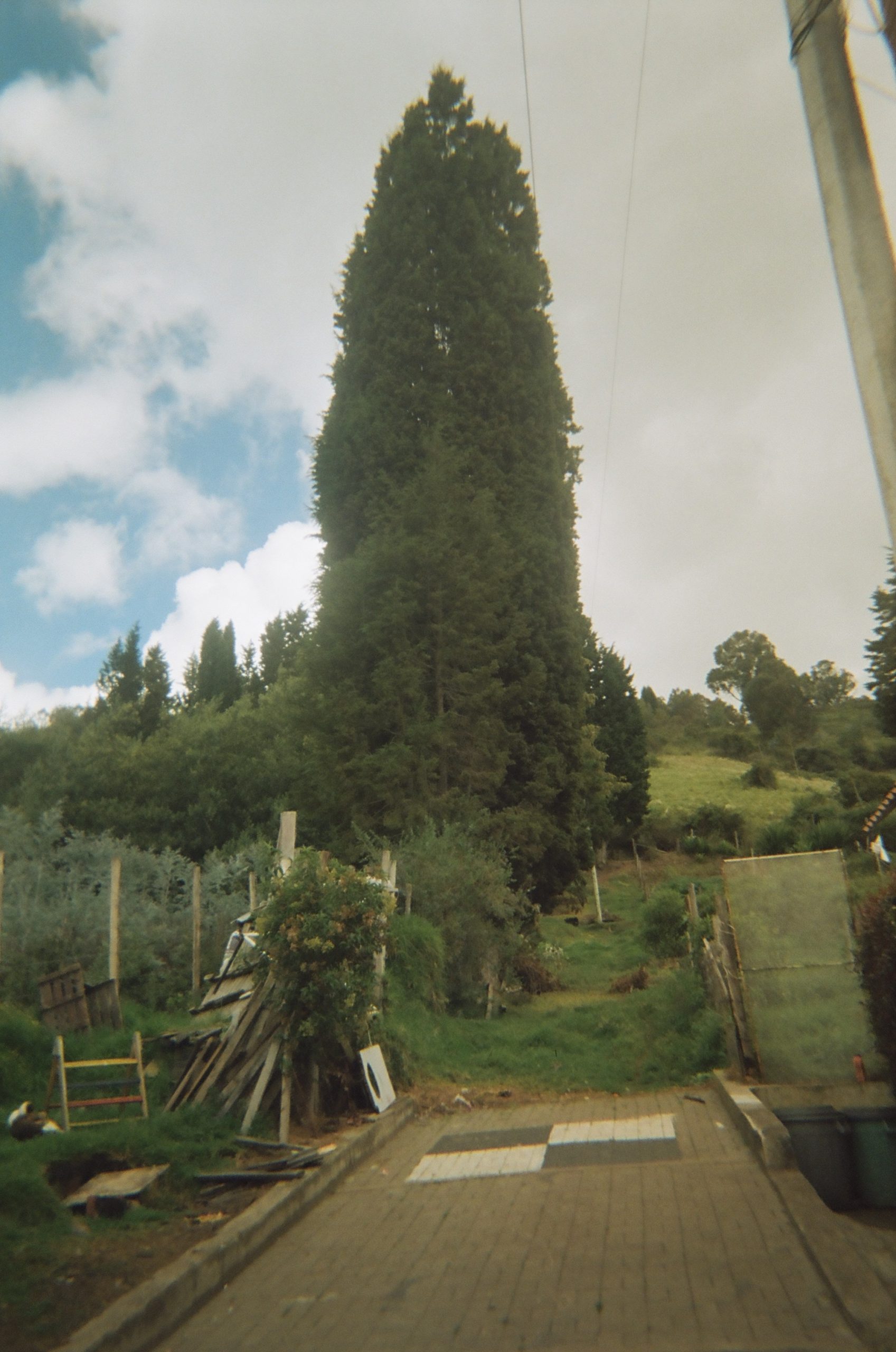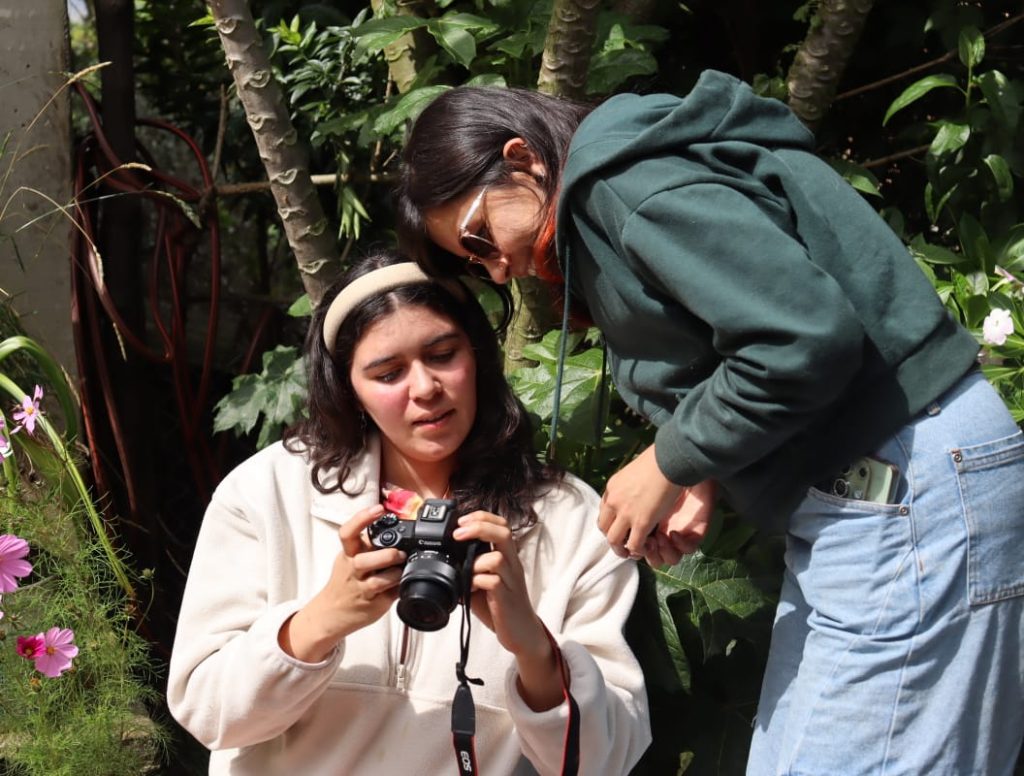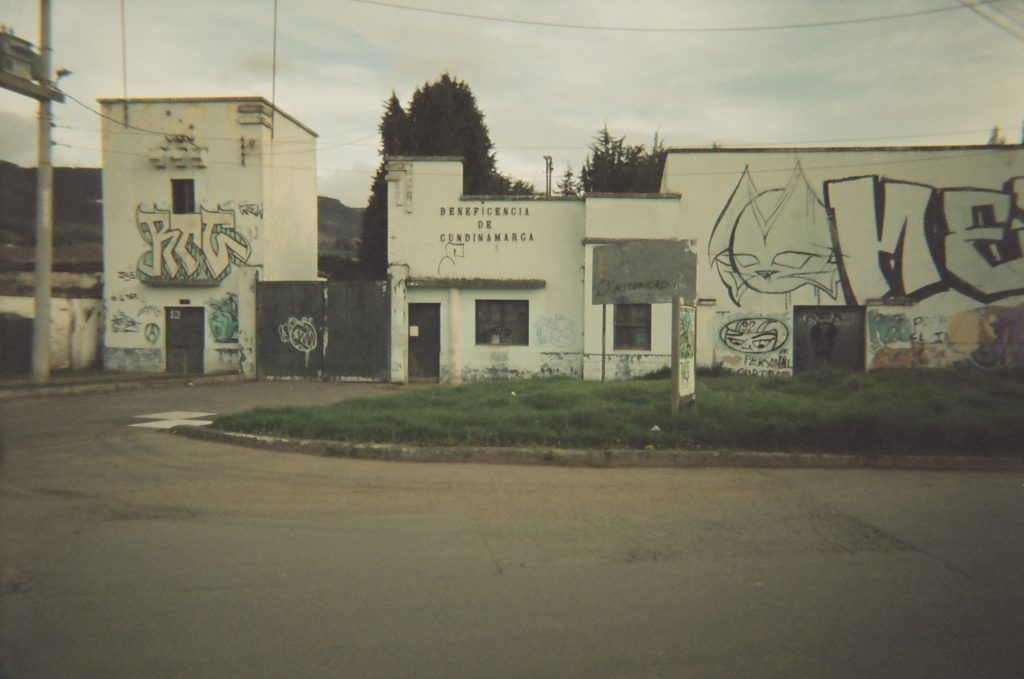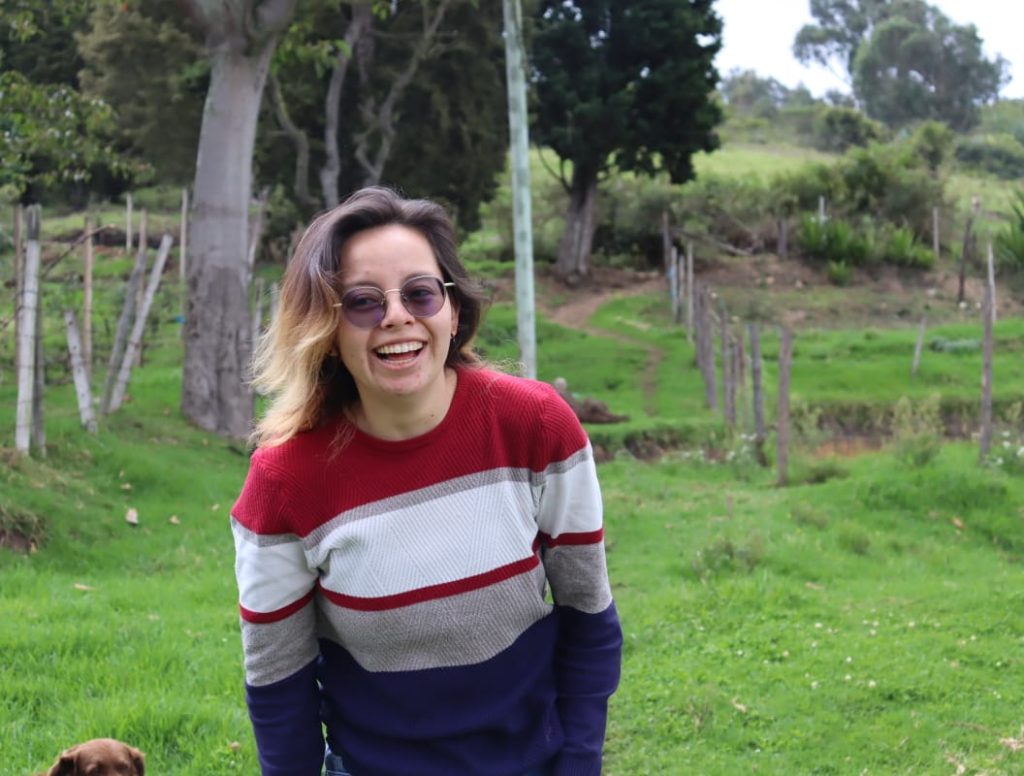In March 2025 we began a Photovoice project in Sibaté, where disposable cameras were given to community members. For three months, they captured images of their surroundings and daily life. After development, the participants selected photos and collectively wrote stories about their community.
Authors: Gloria Hercilia Niño and Ricardo Torres Ortega
At first glance, it looks like just another tree we see every day, but as you observe it more closely, you notice that it has many inhabitants. It is a pine tree shared by various families: doves, pigeons, sparrows, beetles, spiders—and under the spread of its branches, it has also served as a refuge for the occasional stray dog or cat. Despite the diversity, all these beings live in harmony, as good neighbors, sharing shelter and food in common. Looking more closely, we can see tiny creatures dancing happily to the rhythm of the wind and the song of the birds that live there, intertwining through its branches. The tree is located in the upper part of the San José neighborhood, a rural area bordering one of the forests of Sibaté.
This habitat of so many varied species is a meaningful example of good neighborliness, displaying a high level of organization—even though, for many, animals neither think nor reason. They don’t have community boards, authorities, or institutions to regulate behavior, like our neighborhoods and villages do; nevertheless, they show great respect and understanding toward those who are different.
In our neighborhoods, institutions need to serve the community more than other interests, and we, as neighbors, need to learn to live more harmoniously, following this model of good neighborliness in the great tree of San José. At first glance, you may see only a pine tree, but in reality, an exemplary community lives there.
This tree also carries within it the memory of our Muisca ancestors. It has witnessed everything that has happened to the lagoon—polluted, sold off to a foreign monopoly—like a silent observer, unable to speak; while we, humans, who can speak, remain silent in the face of all the injustices committed. What if we were more like animals and less like humans? Perhaps we would live better.





